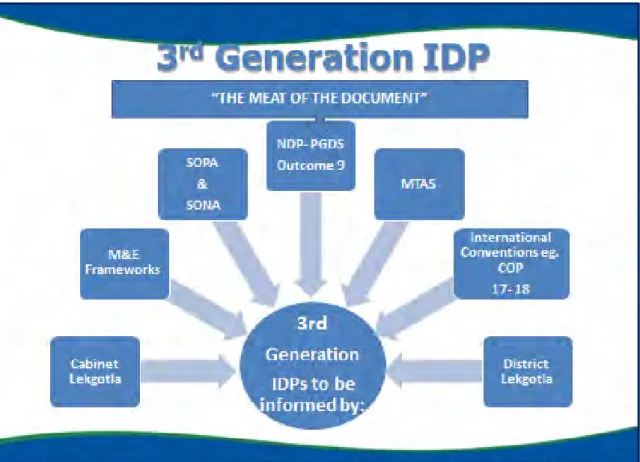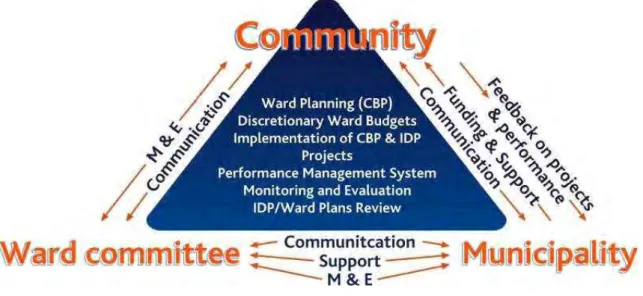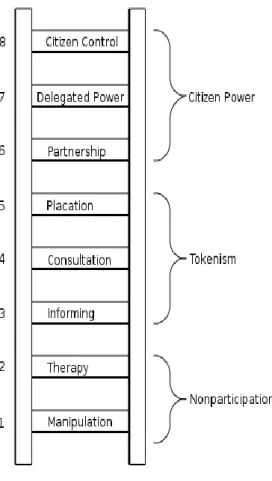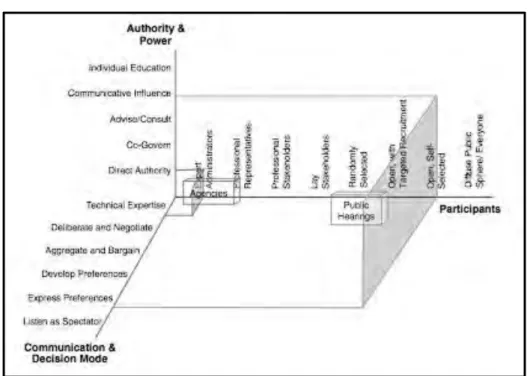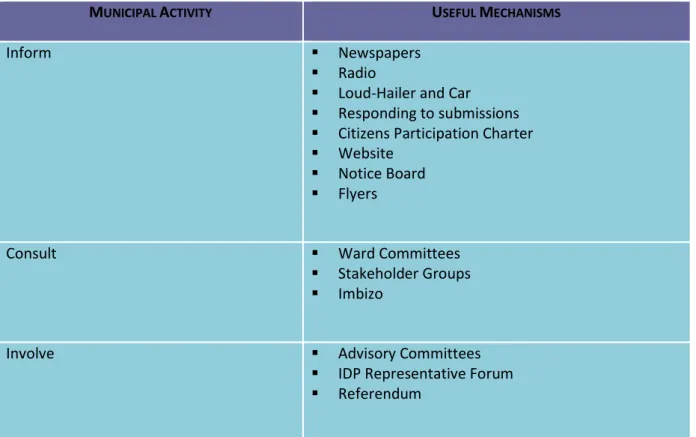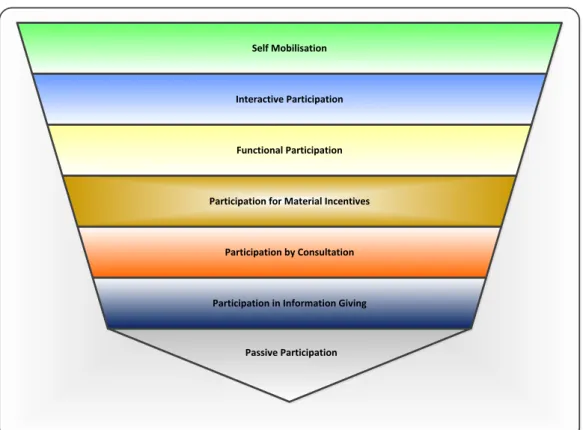A very big thank you to each and every member of the community who helped me understand the development dynamics of the case study. As a result, the community needs of the people of Shakaskraal have not been addressed in the IDP.
Introduction
Gueli et al (2007) mention that this strong focus on public participation in the integrated development planning process is reminiscent of the United Nations' Agenda 21 program of 1991 which South Africa was one of the countries that committed to the program.
Motivation
The Aim of the Dissertation
A measure of success would be that the community's development needs would be reflected in the Integrated Development Plan and the Spatial Development Framework (SDF). In particular, Chapter 5 of the Act deals with the integrated development planning process and the integrated development plan which is the result of this planning and development approach.

Main Research Question
The municipality is considered one of the fastest growing municipalities in the country. Facilitating public participation in the process of development, evaluation and implementation management of the municipality's IDP;
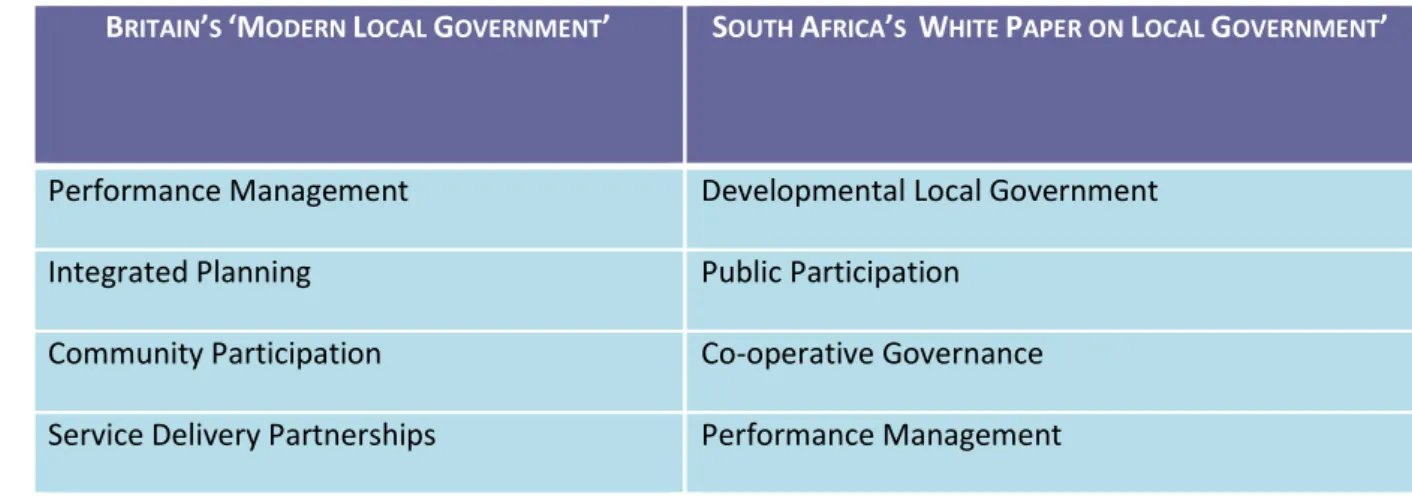
Objectives of the Research Study
Hypothesis
The Case Study Area - Shakaskraal Located in the KwaDukuza Local Municipality
Chapter Outline
Conclusion
Introduction
The literature review provided looks at the integrated development planning process and public participation in the international, national and local context. Integrated development planning and public participation are the key elements critically evaluated in this study.
Integrated Development Planning in the International Context
Thus, the integrated development planning process produces two outputs – a process plan in the form of the Integrated Development Plan (IDP) and its spatial translation in the Spatial Development Framework (SDF). In his chapter, Harrison argued that integrated development planning and therefore the Integrated Development Plan were the results of the convergence of two specific policies, namely the New Public Management (NPM) and the third way policy approach.
Integrated Development Planning in South Africa
While the concept of integrated development planning was conceived mainly from international discourse, the formal concept of an Integrated Development Plan was introduced by the Local Government Transition Act, Second Amendment Act in 1996. The legislation that followed the Local Government Transition Act expressed similar expectations of integrated development planning and added to the refinement of the IDP document.
Institutional Engagement with Integrated Development Planning in South Africa
It is important that community members participate in the management of their area. It was stated that the opinions of all stakeholders are taken into account in the municipality's IDP process.
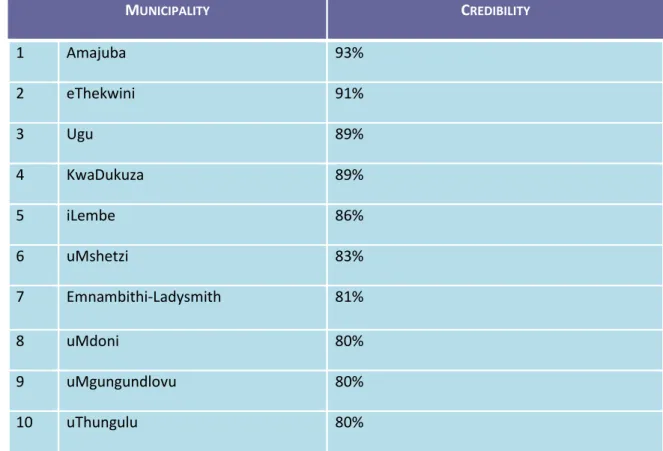
The Principle of Developmental Local Government in South African Integrated Development
Integrated Development Plans
Gueli et al, (2007, page 101) presents the specific purpose and main principles of the IDP. Therefore, the product that is produced which is the IDP is meant to be a reflection of the needs of the community.
Defining an Integrated Development Plan
The vision of the Council for the long-term development of the municipality with an emphasis on the most critical needs of development and transformation;. Todes (2004) identifies the key role of EDP as a contributor to sustainable development, but at the same time the process of integrated development planning is seen as a systematic approach, which integrates socio-economic and ecological dimensions.
The Policy and Legislative Context of the Integrated Development Plan in South Africa
The local government is obliged by law to ensure that the preparation of the plan must be carried out in a participatory manner. Act on spatial planning and land management, (Act no. provides clear guidelines for the development of the physical framework (SDF) that is part of the integrated development plan.
Integrated Development Planning in KwaZulu-Natal
During the assessment of the first generation of IDPs, the IDPs were assessed by the IDP Forum, which also included provincial representatives of the DPLG and sector departments. The most distinguishing factor in the second generation of the IDP evaluation is that the concept of scoring was introduced into the assessment structure for the first time.
Integrated Development Planning in the KwaDukuza Local Municipality
Public participation in iLembe District is guided by the Community Participation Strategy (CPS), which the district municipality has developed from the Community Participation Framework (CPF) in the province of KwaZulu Natal. Unstructured interviews were held with the three public participation stakeholders in the IDP public participation processes in KwaDukuza Local Municipality.
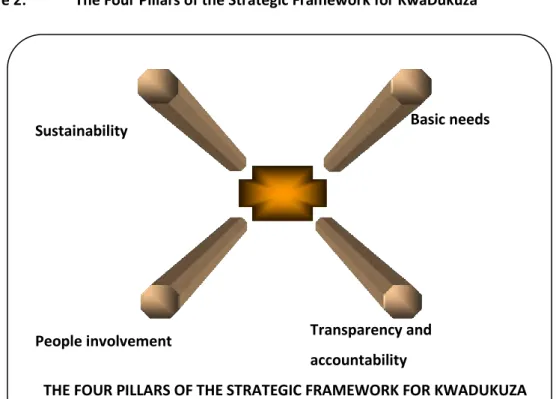
Guide Packs and Integrated Development Plans
Public Participation in the Province of KwaZulu-Natal
Public Participation in KwaDukuza Local Municipality
Conclusion
Introduction
The first case study looks at Public Participation in the City of Cape Town which is greatly influenced by Port Alegre in Brazil where Port Alegre has successfully managed to undertake participatory budgeting. The second case study looks at Public Participation in Mexico City and in this study public participation did not achieve positive results, some of the reasons for this are highlighted in the thesis.
Public Participation in the City of Cape
The City of Cape Town has adopted some elements of participatory budgeting in their public participation in the IDP process. The City of Cape Town has merged the sub-council structure it imported from Port Alegre with the municipality's ward committee structure.
The Case Study of Mexico City
As a result of this disorganized manner in which citizen participation was carried out in respect of the budget, room was left for mismanagement of the budget and the process involved in the expenditure. In phase one, the governor of Mexico City sends budget participatory proposals to the Neighborhood Committees (NC).
Conclusion
This precedent research points to failures in the institutional structures of governance and public participation and to the interference of government officials in community decision-making. Questions are raised about the relevance of Mexico's participation structures and whether or not it is necessary to look at other participation interventions that help engage the community.
Introduction
A Definition of Integrated Development Planning
Integrated Development Planning as a Process
KwaDukuza Local Municipality is the largest contributor to the economy of iLembe District (KDM SDF, 2011). One of the facilities that is missing in the municipality is a technical or DET faculty.
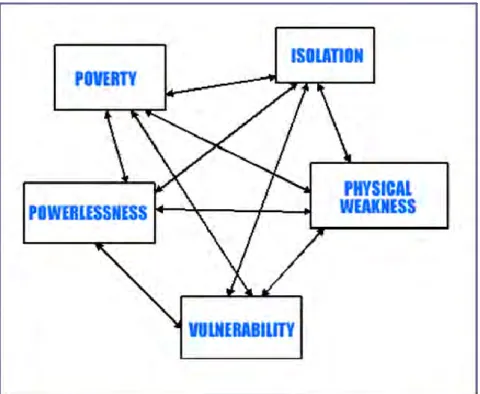
The Spatial Development Framework
Public Participation
Public Participation Methods
Are the people participating in the public participation sessions representative of the relevant population or general public. Input from the community should be considered as part of valuable tools linked to the substantive value of the IDP.
Inclusiveness
Poverty
Sustainable Livelihoods Approach
Social Justice
Theoretical Framework
Collaborative Planning
Communicative Planning
Advocacy Planning
Conclusion
Introduction
It presents a description of the case study location in relation to KwaDukuza Local Municipality, iLembe District and KwaZulu-Natal Province. The thesis focuses on a certain period of time from the point of view of development in the municipality from the introduction of the first IRL to the third generation of IRL.
KwaDukuza Local Municipality in the context of KwaZulu Natal
The municipality is considered to be one of the fastest developing municipalities (KDM SDF, 2011) in the province due to the growth of the housing market. Many companies have chosen to establish commercial activities in the municipality for a number of reasons, but the location of the municipality to Dube Trade Port and King Shaka International Airport serves as the biggest influence on the growth and development of KwaDukuza Municipality.
KwaDukuza Local Municipality in the Context of ILembe District Municipality
While the municipality has many attributes, poverty, unemployment and HIV/AIDS remain as some of the development challenges. The well-developed areas of KwaDukuza Municipality lie along the coastline of the municipality which is mainly the areas of Ballito, Salt Rock and Sheffield Beach.
Shakaskraal in the Context of KwaDukuza Local Municipality
The above data indicates the number of households and the level of income earned, this indicates that the majority of the households in Shakaskraal have an income and therefore actively participate in the economy of the municipality. The above information provides insight into the number of people who have different levels of education, approximately 1/3 of the population has a grade 12 level of education which is a positive sign in terms of development.
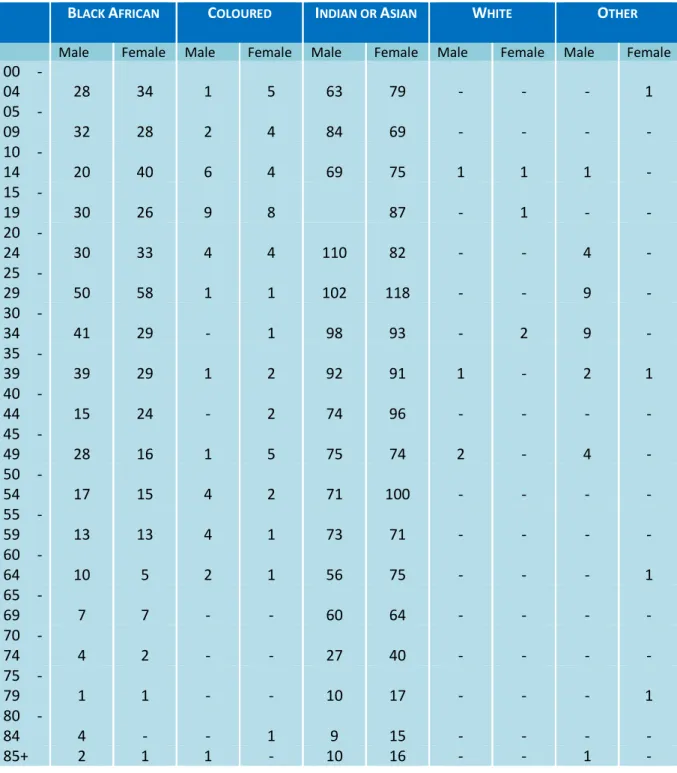
Conclusion
This introduction to the case study helps to understand the dynamics of the area and serves as an illustrative picture when proving the hypothesis.
Introduction
The Strategic Planning Approach
We have to become adept at dealing with uncertainties, become imaginative, paint relevant scenarios and juggle the possibilities.” Phases 1 to 4 of the research borrow from this idea and will explore how public participation played out in Shakaskraal and provide a window into the current state of participation of the public and integrated development planning, which is also a key feature of the strategic planning approach. Particularly important in strategic planning and which are also part of the characteristics of this research are:-.
The Strategic Planning Process
The sections highlighted in shades of red will be answered in phases 5 and 6. Although the table above represents a standard strategic planning process, the integrated development planning process is similar to that discussed in Chapter 3 and is differentiated according to the different phases of the process. IDP cycle and Robinson mentions that the IDP process is extremely strategic in nature.
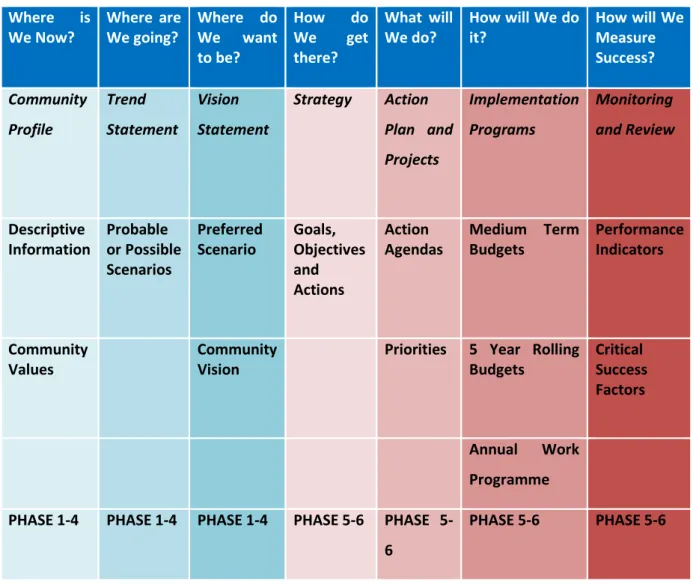
The Research Process
Various chairmen of community organizations were interviewed to provide a perspective on IDP and public participation processes in the municipality. In order to get a true reflection of the effectiveness of public participation in the IDP process, it is important that the interviewees had lived in Shakaskraal during the temporal period of the research.
Conclusion
In addition, the research focused on identifying the shortcomings of the current approach and, based on these findings, suggests alternative approaches that could be used in the municipality's public participation processes. It will be referred to chapter 8 and is the final chapter of the research and thesis and will provide suggestions based on the findings of the research.
Introduction
Phase Four of the research findings examines the information obtained from three major public participation stakeholders in the KwaDukuza Local Municipality. An analysis is done on the general state of public participation in the municipality has been undertaken.
Phase Two of the Research: Informal Interviews with Targeted Stakeholders
The purpose of the questionnaires was to determine the extent of knowledge about the KwaDukuza IDP in the community of Shakaskraal. 97% of the community interviewed stated that they would like to be part of the IDP process.
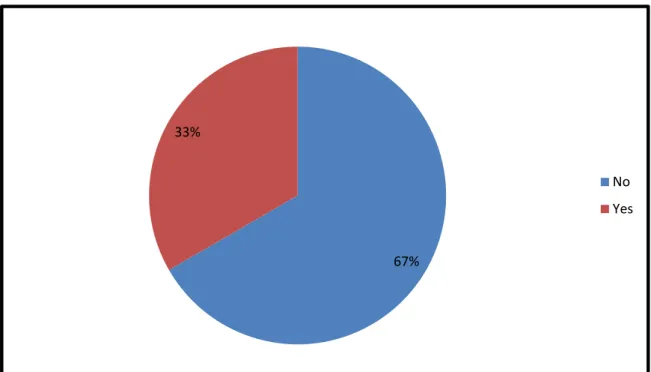
Cultural Reflections on Shakaskraal
Environmental Awareness and Sustainability
The Spatial Layout
Education
Transport
Phase Three of the Research: Questionnaires with the Community of Shakaskraal
Phase 4 of The Research: Unstructured Interviews With Public Participation Stakeholders In
The Swot Analysis for Shakaskraal
Conclusion
Introduction
The hypothesis stated that public participation in the integrated development planning process is less than optimal in KwaDukuza Local Municipality and requires additional strategic interventions to fulfill its mandate. In this final chapter, recommendations are then made and a set of conclusions drawn from the research to assist public participation during the IDP process in KwaDukuza Local Municipality.
Accepting The Digital World
Social media has also been identified as a suitable means of communication in KwaDukuza Local Municipality. Residents believe that the municipality should be accessible through the use of social media platforms.
Accepting The Fluid Participation Process
Arnstein (1969) describes methods of engagement for communities which involve them in the overall development of the municipal area. Communities must be constantly aware of the development of the surroundings and believe in the development of fostering the development dialogue.
Educating The Workforce
Ideally, this module should focus on the transfer of skills that enable participants to engage in the process of sound financial decision-making in the municipality. Of great importance was the concept of the Sustainable Livelihood Approach.
Educating The Public/Civil Society
Activating The Youth
Advocacy Planning
This advocacy planning process could run parallel to that of the prescribed IDP hearing program, but would increase the level of information and engagement with it because its arena is located at the departmental level. It would also be an ongoing program and not limited to the prescribed time period like the compulsory program.
Conclusion
Location of KwaDukuza Local Municipality in iLembe District and the Province of KZN
This research will evaluate how successfully the community of Shakaskraal participated in the integrated development planning process of the municipality. The research question and the sub-questions that have been set form the basis of the thesis.
Municipalities in KwaZulu-Natal
It explains the structure of the neighborhood committees, their importance in the IDP process and indicates that the role of the municipality is to ensure effective public participation in the IDP process. The principles of public participation highlighted in the IDP Guide Pack include the following (IDP Guide Pack 1, page 37): -.
Locality Plan for Cape Town, South Africa
Participatory budgeting in Brazil has been said to be the result of an innovative reform program aimed at overcoming severe inequality in the city and was an attempt to raise living standards. The initiative began in the poorest and most disadvantaged areas, where neighborhood movements emerged that demanded better quality services and autonomy over their own initiatives.
The Location of Port Alegre in Brazil
The City of Cape Town's Integrated Development Plan (IDP) public participation process builds on the best practices of the Port Alegre study and incorporates elements into their public participation processes. Issues relating to the spending of the City of Cape Town budget are also submitted to the community and communities can direct the spending of the budget in their department.
A Locality Map of Mexico
When implementing citizen participation, it should be noted that participation is conducted in different phases. The IDP is intended to represent the community's point of view and is largely developed in response to community needs.
Location of KwaDukuza Local Municipality in iLembe District and the Province of KwaZulu-
The Location of the KwaDukuza Municipality within the iLembe District Municipality
The Road Network Linkages in KwaDukuza Municipality
This challenge is not unlike that experienced in other local municipalities in the District, the province of KwaZulu-Natal or other parts of the country. The most distinctive element in terms of the spatial extent of KwaDukuza is the disparity between the location of the rich and poor areas of the municipality.
The KwaDukuza Local Municipality indicating the Developed and Less Developed Areas of
The uneven urban form resulting from the apartheid legacy and infrastructural lag has resulted in challenges related to service delivery. Moving away from the developed coastal strip towards the hinterland, less developed areas are visible with limited access to services.
The Location of Shakaskraal within the KwaDukuza Local Municipality
The Area of Shakaskraal
The Location of the Woodmead Cluster along the R102
Dawood has lived in Shakaskraal for many years and has been actively involved in the development of the area. The Shakaskraal community consists mostly of people of Hindu, Muslim and Christian faiths.
Land along the Coast Reserved mostly for White Occupation
An Aerial View of the City of Cape Town
The case study examines two case studies on public participation in development and the aim is to gain an understanding of how public participation took place in these developments, what level of success was achieved and also what were some of the challenges that were experienced.
Port Alegre – Brazil
In general, it appears that the sub-council structure of the City of Cape Town has increased the level of transparency and accountability of civil servants and Ward Councilors and service delivery has been speeded up in some areas. The elements of participatory budgeting incorporated by Port Alegre have helped the City of Cape Town to actively engage with communities and encourage communities to join the development dialogue of the city.
A View of Mexico City
During this final phase of the integrated development planning process, the document or IDP is produced and presented to the municipal council. They ensure that proper public participation took place in the IDP process and that communities were actively involved in the process as this is a critical element to the development of the IDP.
During the 1980s, resistance to the administration of the area by the Development and Services Board grew. It was interesting to note that the DSB became one of the service providers in Shakaskraal in the post-autonomous period.
Shakaskraal Community Hall
According to the information gathered during the informal interviews, it was gathered that the concerns of the community were taken into account in the development of the area. Members of the community organize themselves into these cultural groupings and not only carry out social activities together.
One of the Hindu Temples in Shakaskraal
Important to the cultural theme is the way in which these cultural and traditional organizations provide a support network for local community members. This is a remarkable feature and contributes to the sense of community that exists in Shakaskraal.
The Shembe Place of Worship in Shakaskraal
New Church Developed in Shakaskraal
Firstly, that the community does not want to participate in the IDP process and therefore chose to be ignorant of the plan and their role in it. The following section unpacked the concerns regarding community participation in IDP public meetings over the three generations of IDP.
